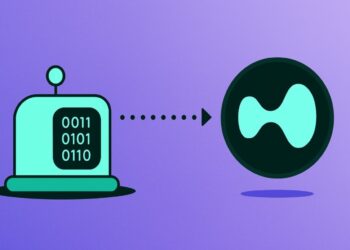Bitcoin just got a major boost, letting its tokens run smart contracts like Ethereum does. This new BRC-20 2.0 upgrade opens doors to apps and finance tools right on the network. But can it really turn Bitcoin into a hub for decentralized finance? Stick around to see what experts say and how it might change your crypto world.
What the BRC-20 2.0 Upgrade Means for Bitcoin
The BRC-20 2.0 upgrade hit the Bitcoin network at block height 912,690 on September 1, 2025. It adds Ethereum-style smart contracts to BRC-20 tokens. This means developers can now build decentralized apps and DeFi protocols directly on Bitcoin without needing bridges or wrapped assets.
This upgrade turns Bitcoin from a simple store of value into a programmable platform. Before, BRC-20 tokens were mostly for basic minting and transfers. Now, they gain flexibility, letting users create things like lending platforms or automated trading.
The change comes from embedding the Ethereum Virtual Machine, or EVM, into the BRC-20 indexer. This tool tracks and manages tokens on Bitcoin. With EVM, code can run automatically when conditions are met, just like on Ethereum.
Experts point out this could mobilize billions in dormant Bitcoin capital. For instance, BRC-20 tokens have already seen over $3 billion in trading volume since their launch in 2023, according to recent market data from platforms like CoinMarketCap.

How the Upgrade Works and Its Key Features
At its core, BRC-20 2.0 integrates EVM functionality straight into Bitcoin’s token system. Developers can write and deploy smart contracts that interact with Bitcoin-native tokens. This skips the need for side chains or complex setups.
One big plus is programmability. Tokens can now handle complex tasks, such as creating stablecoins or NFT marketplaces on Bitcoin.
Here’s a quick look at what sets BRC-20 2.0 apart from older versions:
-
-
- Smart Contract Support: Run code that automates agreements, like loans or swaps.
- DeFi Integration: Build apps for lending, borrowing, and trading without leaving Bitcoin.
- Cross-Chain Ease: Works smoothly with other EVM chains, boosting interoperability.
- Security Boost: Leverages Bitcoin’s strong network for safer transactions.
-
This setup differs from rivals like Runes, another Bitcoin token protocol. Runes sticks to simple, efficient designs using Bitcoin’s own model, but it lacks smart contract power.
The upgrade was developed by teams like Best In Slot, key players in Bitcoin’s Ordinals ecosystem. They rolled it out to expand Bitcoin tokens beyond meme coins into real financial tools.
Expert Views on Bitcoin’s New Capabilities
Industry leaders are buzzing about the potential. Edan Yago, CEO of BitcoinOS, says this gives developers tools to make Bitcoin itself programmable. “We’re unlocking ways to build rollups and use zero-knowledge proofs for trustless bridges,” he explained in recent comments.
Dmitry Gusakov from Lido sees it as a game-changer. He calls Bitcoin “digital golden fuel” with EVM, opening doors to DeFi goodies like stablecoins that Ethereum users enjoy.
But not everyone is all in. Leo Fan from Cysic warns that scalability and Bitcoin’s culture could be hurdles. “The real test is delivering apps that justify the added complexity,” he noted.
These views come from fresh analyses in the crypto space, highlighting both excitement and caution.
Recent data backs the hype. Bitcoin’s network has processed millions of inscriptions since Ordinals started, with BRC-20 driving much of that activity. A 2025 report from Chainalysis shows Ordinals-related transactions jumped 150% in the past year, signaling growing interest.
Potential Impact on DeFi and the Crypto Market
This upgrade could shake up decentralized finance. Bitcoin holds over $1 trillion in market cap as of September 2025, per CoinGecko data. Bringing DeFi to it means tapping into that huge value without risky cross-chain moves.
Imagine borrowing against your Bitcoin holdings directly on the network. Or trading synthetic assets tied to real-world items. These ideas are now possible, potentially drawing in big institutions.
| Feature | Before BRC-2.0 | After BRC-2.0 |
|---|---|---|
| Token Functionality | Basic minting and transfers | Full smart contracts and dApps |
| DeFi Options | Limited to off-chain solutions | Native lending, swaps, and more |
| Developer Tools | Simple inscriptions | EVM-compatible coding |
| Market Reach | Mostly meme coins | Broad financial apps |
The table shows the shift clearly. It positions Bitcoin to compete with Ethereum, which has over $400 billion locked in DeFi protocols, according to DeFiLlama’s latest figures from August 2025.
Still, challenges remain. Bitcoin’s block times and fees might slow down complex apps. Plus, the community values simplicity, so adoption could take time.
Looking Ahead: Challenges and Opportunities
While promising, BRC-20 2.0 faces real tests. Scalability issues on Bitcoin could limit how many apps run smoothly. Developers must prove they can build useful tools that attract users.
On the bright side, this could spark innovation. Think of Bitcoin as the secure base for a new wave of crypto apps. Early projects are already testing DeFi protocols, with some aiming for launches by late 2025.
The upgrade builds on Bitcoin’s evolution. From its 2009 start as digital cash, it’s grown into a global asset. Now, with smart contracts, it steps into Ethereum’s territory.
In wrapping up, Bitcoin’s BRC-20 2.0 upgrade is a bold move that blends the network’s rock-solid security with Ethereum’s smart tech, potentially unlocking billions in new economic activity through DeFi and apps. It’s a step that could redefine crypto, making Bitcoin more than just “digital gold” but a thriving platform for finance. What do you think about this shift? Will it boost Bitcoin’s role in your portfolio, or do you see roadblocks ahead? Share your thoughts in the comments and spread the word on social media. This topic is trending on X with hashtags like #BRC20 and #BitcoinDeFi – join the conversation and tag your posts with them when sharing this article!









